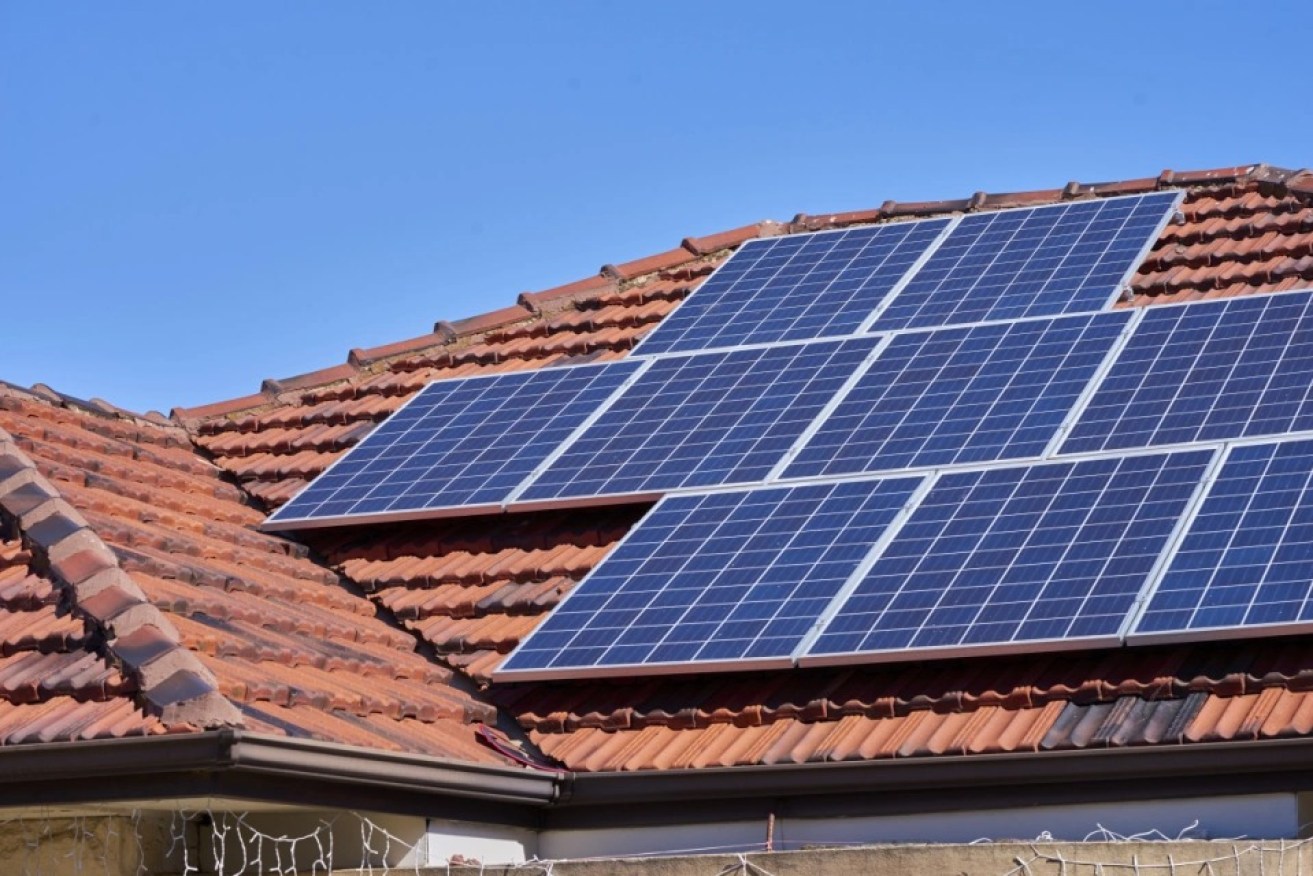Rooftop solar owners face cash slash for feeding power grid
Victorian solar panel owners will receive about one third less money for pumping energy back into the grid under tariff changes next financial year because of the increasing saturation of daytime generation.

Solar panel owners in Victoria will have their feed-in tariff rate cut by 32 per cent from July. Photo: AAP
The base rate will drop to 3.3c/kWh starting in July, a 32 per cent reduction compared to the 2023/24 rate.
Customers on time-varying feed-in tariffs will also receive a lower rate between 2.1c/kWh and 8.4c/kWh depending on the time of day energy is fed back into the grid.
The minimum feed-in tariff lays out the base amount energy companies must pay solar customers for electricity fed into the grid and is revised annually by the independent Essential Services Commission.
“The share of renewable energy generation is increasing,” the economic regulator’s report said.
“This has lowered the environmental impact of electricity generation and reduced wholesale electricity spot prices, especially during daylight hours.”
The regulator considers prices in the wholesale market, costs energy companies avoid when solar is pumped into the network and the impact on human health avoided due to a reduction in air pollution when determining the floor prices.
Energy companies can pay customers more than the base tariff, but not less.
Unhappy solar customers pushed back in submissions to the regulator, labelling the new rate as too low.
“In general, solar customers were strongly against our decision,” the report stated.
“(They) felt the minimum feed-in tariffs do not fairly compensate them and that the difference between the feed-in and retail tariffs is unfairly large.”
The regulator acknowledged retail electricity prices have increased but said if the rate was any higher, retailers and their customers would be better off buying electricity from the National Electricity Market.
Opposition energy spokesman David Davis said the government was punishing solar households after it failed to act on advice to deal with the flood of rooftop solar.
The Greens’ Tim Read said solar power would still lower energy bills even with the lower tariffs but called on the government to include renters in its solar rebate scheme.
The commission’s report states that despite the value of solar exports decreasing, many Victorians continue to install roof-top solar.
Solar customers can recoup significant savings by using the energy generated by the solar panels, rather than importing power from the grid at retail rates and shifting electricity usage to daylight hours is the best way to maximise the financial return on a solar system.
– AAP




